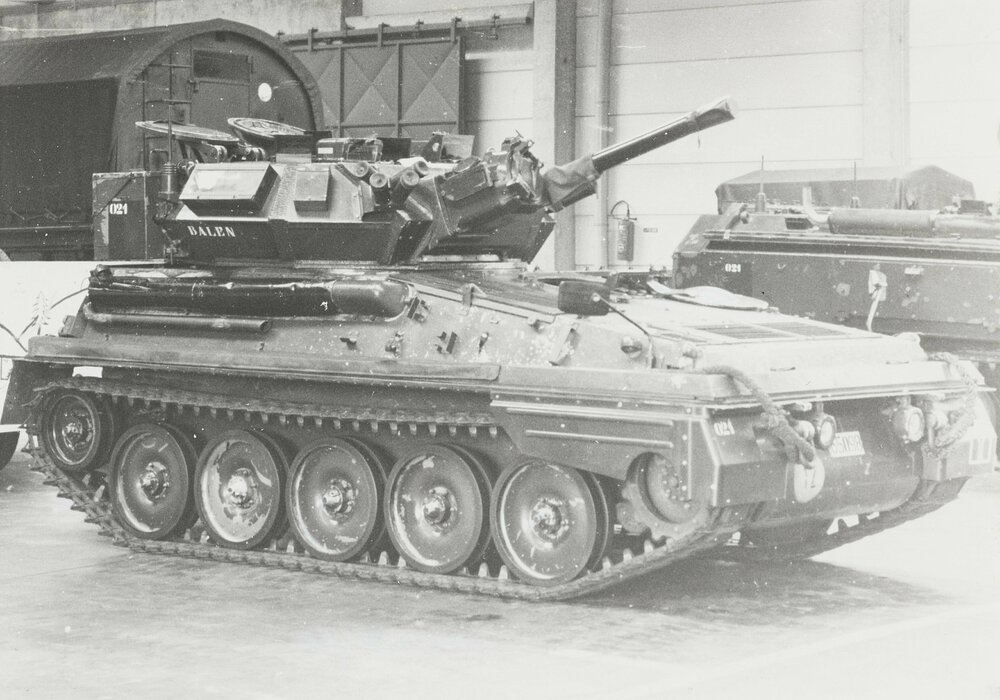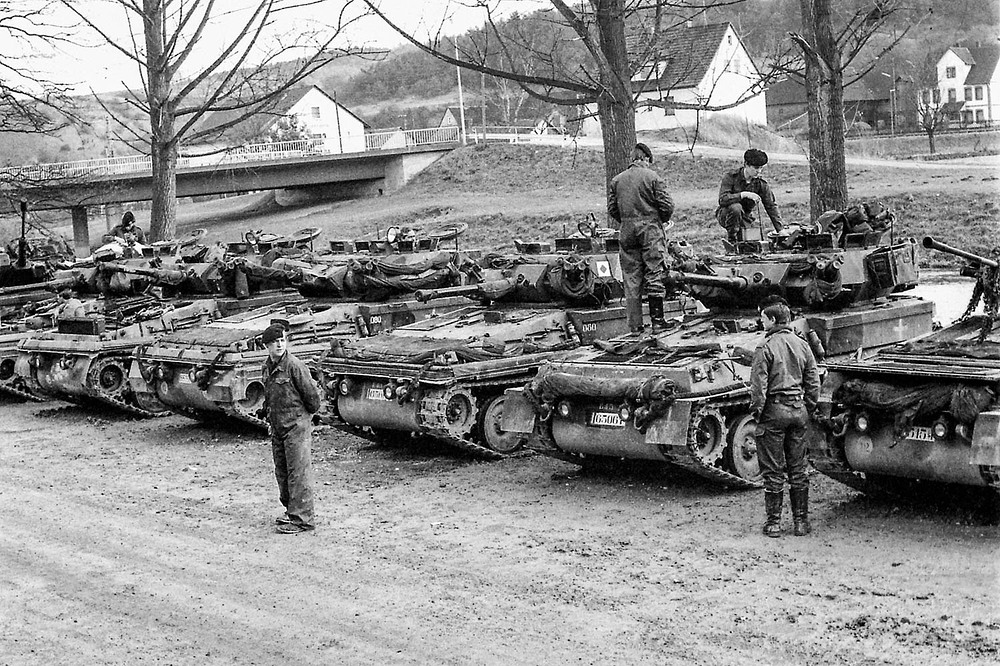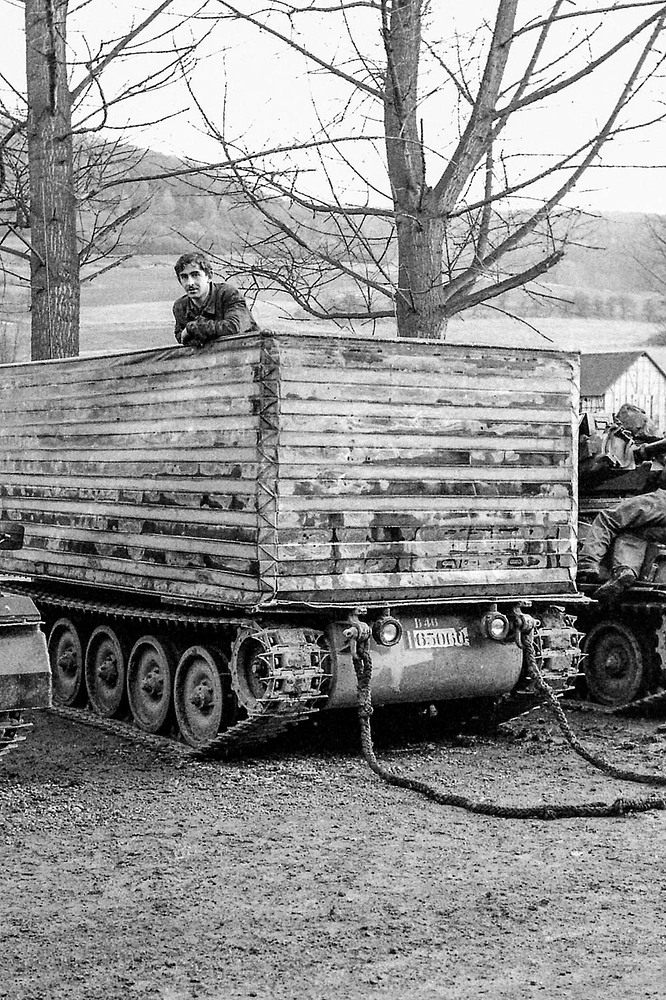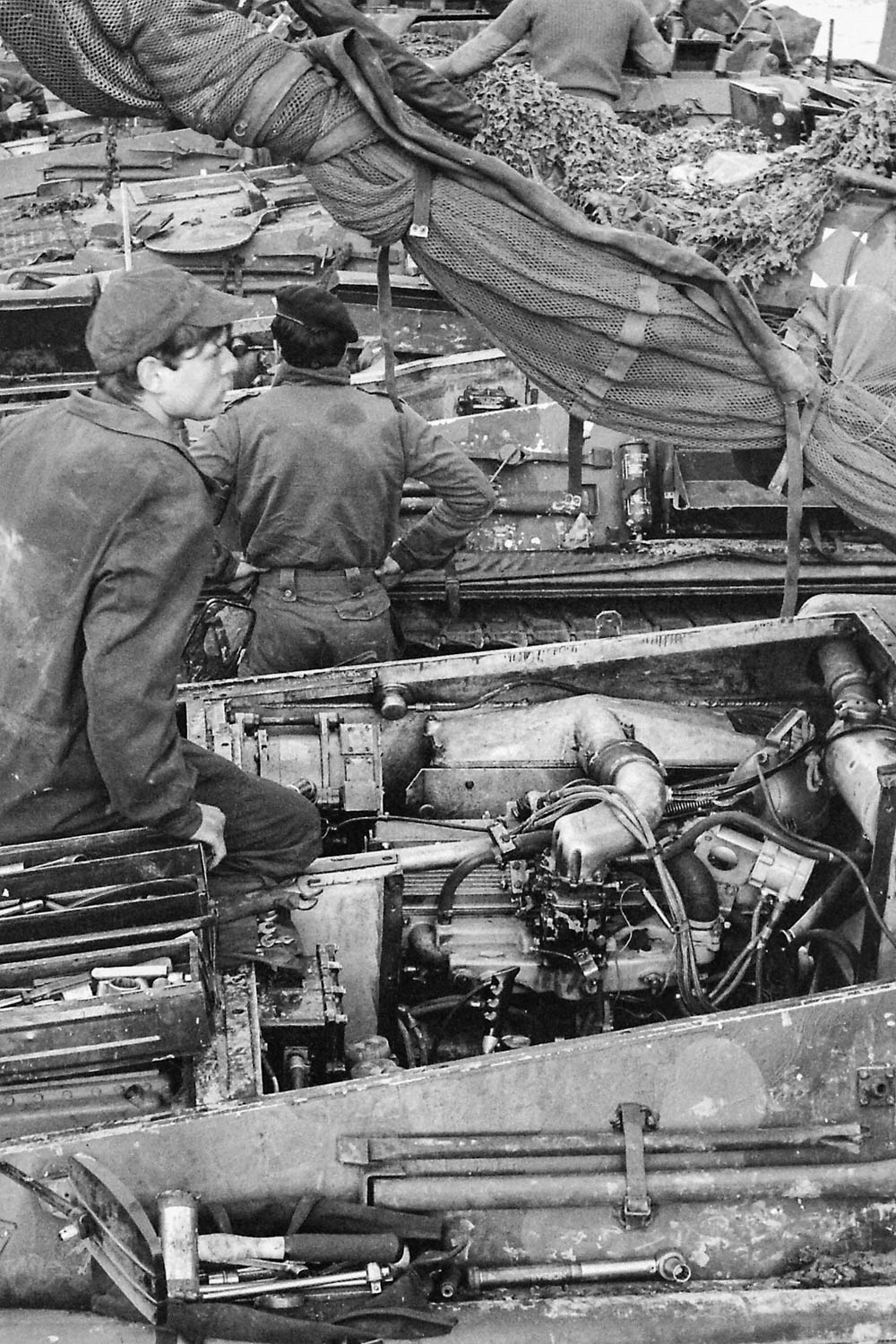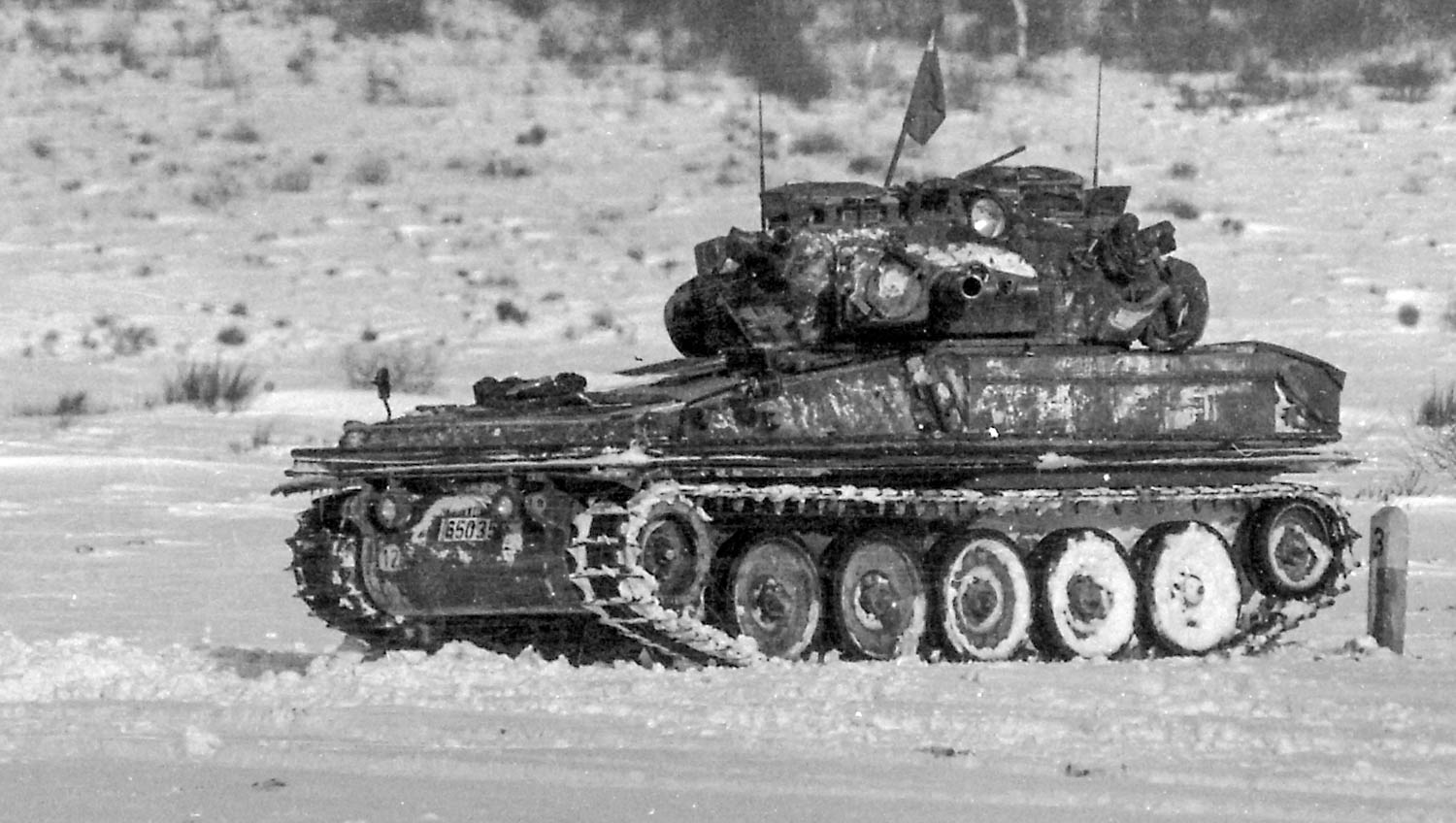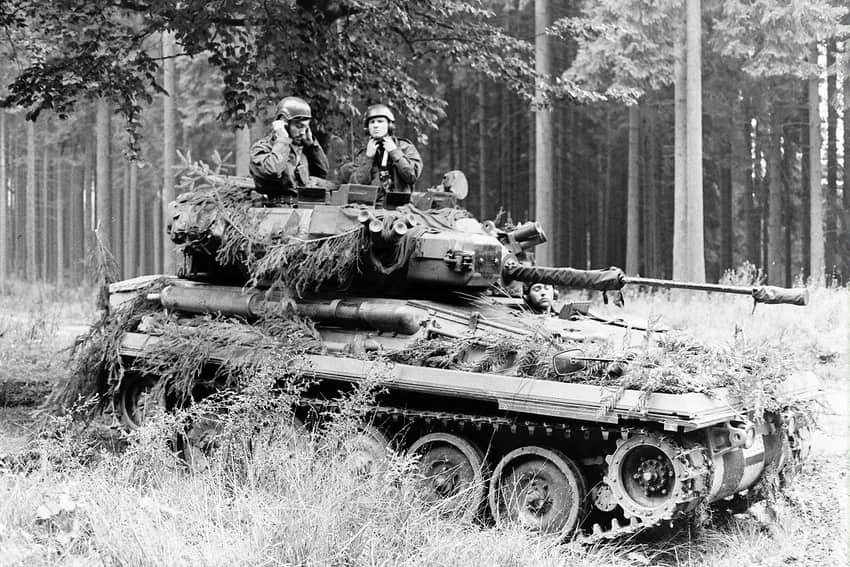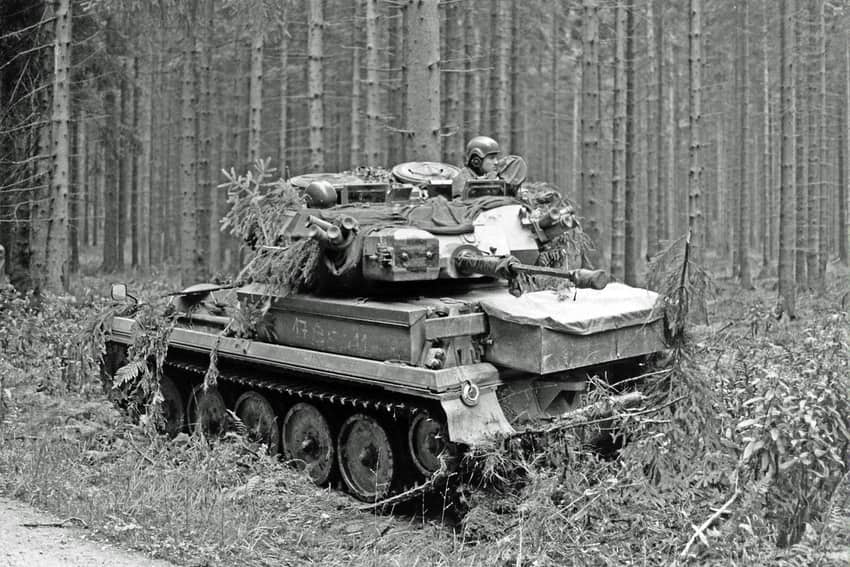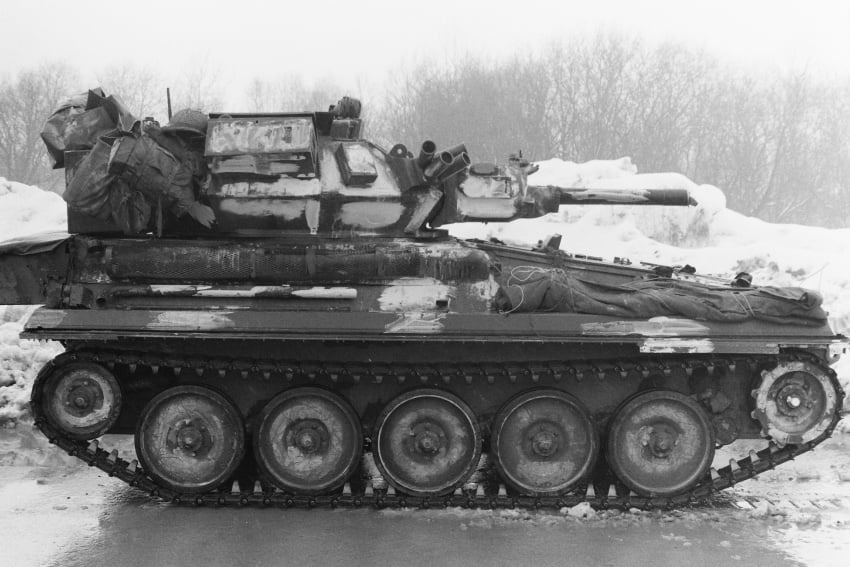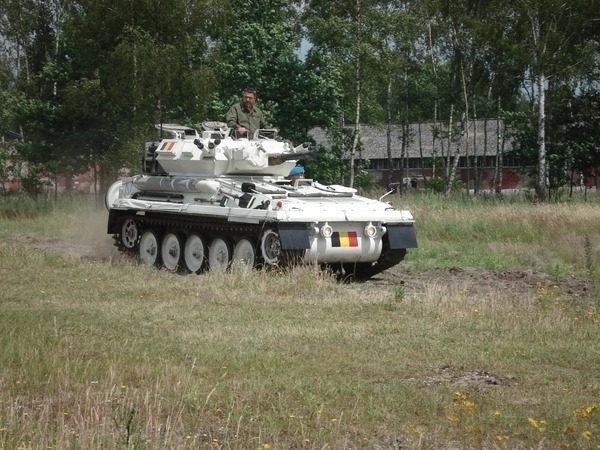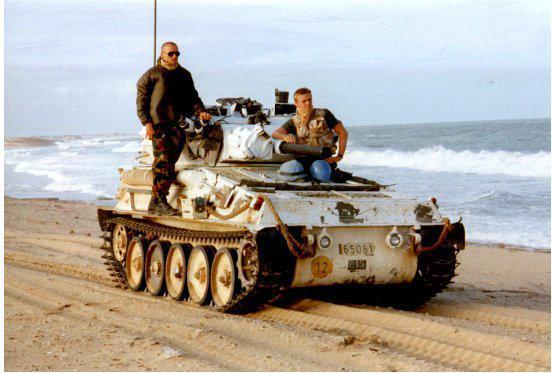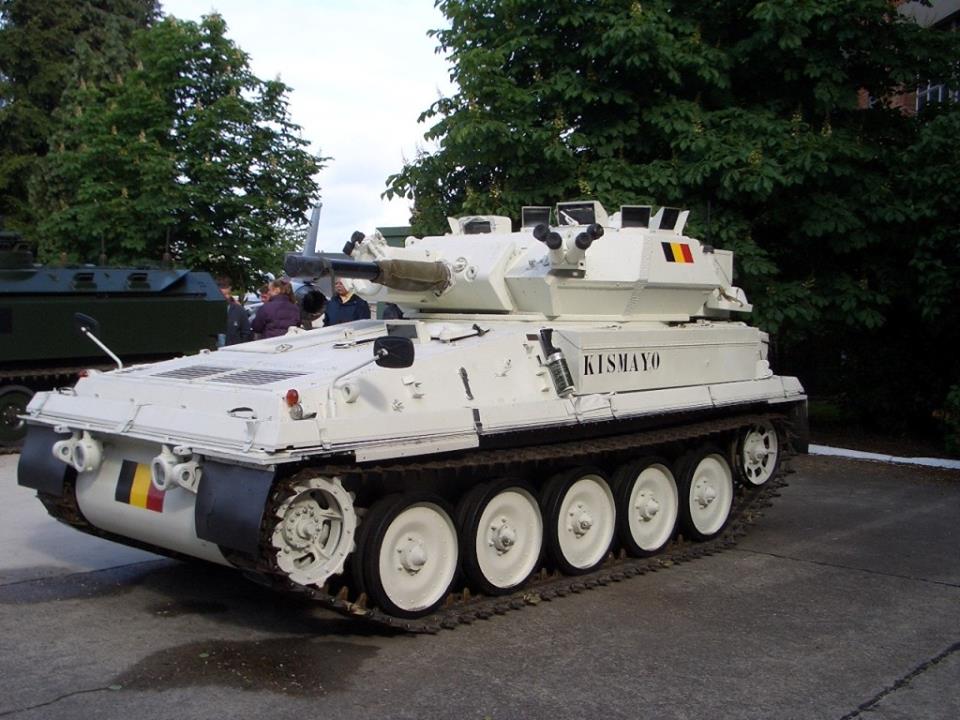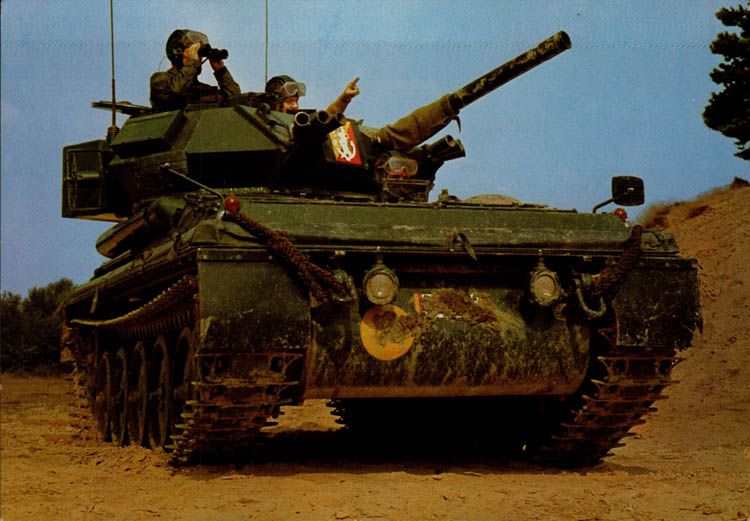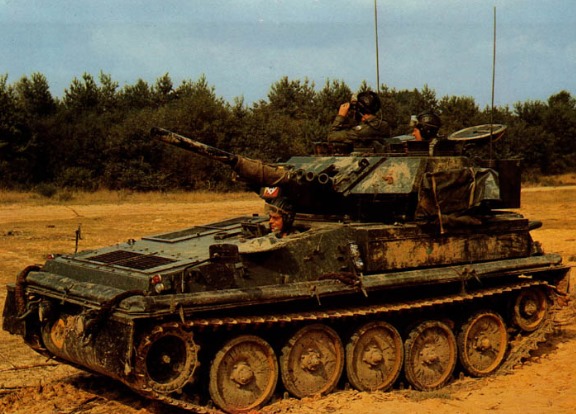- Yes
- No
- (independent) BeNeLux tree
- France: BeNeLux subtree
- Belgian (sub)tree
- other
- no/negative
TL;DR: Belgian FV101 Scorpion, part of the 701-vehicle CVR(T) order, equipped with the 76 mm gun and FN MAG, serving with reconnaissance and para-commando units from 1975 into the 1990s.
History
History
The FV101 Scorpion was developed in Britain by Alvis Ltd as part of the CVR(T) (Combat Vehicle Reconnaissance, Tracked) family in the late 1960s. Designed to provide a light, fast, and air-portable reconnaissance vehicle, it entered British service in 1973. Belgium became one of the first and most important export customers.
In 1975, as part of NATO modernization and to replace outdated jeeps in reconnaissance roles, Belgium decided to adopt the full CVR(T) family. The new vehicles were not only procured but also assembled under license at British Leyland in Mechelen, providing domestic industrial benefits.
Deliveries to Belgian Recce units started that same year, with the 1st Regiment Jagers te Paard (1JP) in Arolsen, the 2nd Regiment Jagers te Paard (2JP) in Lüdenscheid, and the 4th Regiment Chasseurs à Cheval (4ChCh) in Arnsberg being among the first to re-equip. The Paracommando Regiment also received Scorpions and Scimitars to support their rapid deployment role. These units had previously relied on lightly armed jeeps, making the CVR(T) a major step forward in firepower and protection.
The Scorpion was the fire support element of the Belgian CVR(T) fleet. Armed with a 76 mm L23A1 gun, it could fire HE, HESH, Smoke and Canister, giving it versatility against both infantry and light armor. Secondary armament included a 7.62 mm FN MAG coaxial machine gun and twin 3-barrel smoke dischargers. With a Jaguar XK 4.2L 6-cylinder petrol engine producing 195 hp, it reached speeds of up to 80 km/h on roads and had an impressive 600 km range. Its aluminum armor was only resistant to small arms fire and shell splinters (maximum 12.7 mm protection), so Belgian crews relied on speed, stealth, and tactical scouting doctrine.
The Belgian CVR(T) order was vast, Belgium became the single largest user of the CVR(T) platform in history outside of the UK, totaling 701 vehicles, broken down as:
- 133 × FV101 Scorpions (76 mm gun)
- 153 × FV107 Scimitars (30 mm Rarden)
- 266 × Spartans (APC)
- 43 × Strikers (Swingfire ATGM)
- 47 × Sultans (command)
- 41 × Samaritans (ambulance)
- 18 × Samsons (recovery)
The final Scorpion was ceremonially handed over on 6 May 1980 at British Leyland Mechelen, received by General-major Gysemberg (VOX Nr.21, 05 JUN 1980). By then, CVR(T)s were firmly integrated into Belgian Recce doctrine and the vehicles were widely regarded as a success.
In service, Belgian Scorpions participated in numerous NATO exercises in West Germany, training alongside armored brigades like the 1st Armored Infantry Brigade “Bevrijding” (Liberation), as documented in contemporary films and photos (Commons photo of a Scorpion from “Bevrijding”).
However, the Scorpion’s aluminum armor was eventually criticized for flammability risks, and its light protection became increasingly obsolete in the face of evolving threats. By the 1990s, the Scorpion began to be phased out of Belgian service, replaced by more modern reconnaissance vehicles ( Mowag Piranha IIIC DF30 and the Mowag Piranha IIIC DF90).
Specifications (FV101 Scorpion, Belgian service)
Dimensions: L/W/H: 4.39 m / 2.18 m / 2.09 m
Weight: 8.0 tonnes
Powerplant: Jaguar XK 4.2L 6-cylinder petrol engine
Horsepower: 195 hp
Max speed: 80 km/h
Range: ~600 kmCrew: 3 (Commander, Gunner, Driver)
Armour:
- 12.7 mm (max) aluminium alloy (hull and turret)
- Resistant against small-arms and shell splinters
Armament Main gun 76 mm L23A1 low-pressure gun Ammunition HE, HESH, Smoke, Canister Ammo stowage 40 rounds Coax 7.62 mm FN MAG machine gun Pintle mount 7.62 mm FN MAG Smoke 2 × 3 smoke dischargers Additional specifications: NBC protection, night vision, fully amphibious (with preparation), air-portable.
Place in War Thunder
The Belgian Scorpion would be a fast, lightly armored recon vehicle with access to HESH and HE, perfectly suited for aggressive flanking, scouting, and harassing enemy light armor. Compared to other light tanks at its BR, it trades survivability for extreme mobility.
It would be a natural addition to the BeNeLux subtree under France, but it could also feature in an independent BeNeLux tree. Its role is distinct enough to justify inclusion, given Belgium’s significant domestic assembly and its central place in Cold War Recce doctrine.
Pictures
Belgian Scorpions
Belgian Scorpion of the Liberation Armored Infantry Brigade (Bevrijding)
Scorpion with Escadron de reconnaissance Para-Commando
Golden Winkler 1979 FTX COMRECCE
1989 Germany
1988 Germany

UN paint scheme
Sources
Sources
- VOX Nr.21, 05 JUN 1980 – Overhandiging van de laatste CVR(T)
- VOX Nr.28, 29 JUL 1976 – Eerste leveringen CVR(T)
- https://en.wikipedia.org/wiki/FV101_Scorpion#Foreign_users
- https://www.army-guide.com/eng/product1153.html
- https://weaponsystems.net/system/1197-Scorpion
- https://www.militarytoday.com/tanks/fv101_scorpion.htm
- https://ablhistoryforum.be/viewtopic.php?p=2407#p2407
- https://www.para-commando.be/esc_recce.html
- https://commons.wikimedia.org/wiki/File:CVRT_Scorpion_tank_van_de_Belgische_pantserinfanteriebrigade_%22Bevrijding%22_(2155_001622).jpg
- https://youtu.be/fvzFBuEZNw8

